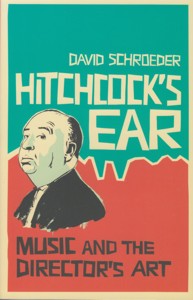
Hitchcock's Ear: Music and the Director's Art
Schroeder, David
Continuum. 2012Ficha técnica
- EAN: 9781441182166
- ISBN: 978-1-4411-8216-6
- Editorial: Continuum
- Fecha de edición: 2012
- Encuadernación: Rústica
- Dimensiones: 14x22
- Idioma: Inglés
- Nº páginas: 263
Disponible en breve
Sin stock. Si se pide hoy, se estima recibir en la librería el 25/04/24¡GASTOS DE ENVÍO GRATIS!
PVP. 69,90€
Añadir a la Lista de deseos
Music is an underexplored dimension in Hitchcocks works. Taking a different view from most works on Hitchcock, David Schroeder focuses on how an expanded definition of music influences Hitchcocks conception of cinema. The structure and rhythm of his films is an important addition to the critical literature on Hitchcock and our understanding of his films and approach to filmmaking.
Alfred Hitchcock liked to describe his work as a director in musical terms; for some of his films, it appears that he started with an underlying musical conception, and transformed that sense of music into visual images. The directors favorite scenes lacked dialogue, and they made their impact through a combination of non-verbal actions and music. For example, the waltz and the piano are used as powerful images in silent films, and this approach carries over into sound films. Looking at such films as Vertigo, Rear Window, and Shadow of a Doubt, Schroeder provides a unique look at the way that Hitchcock thought about cinema in musical terms.
CONTENIDO:
List of illustrations
Preface
Introduction
- The sway of America and Europe
- The Lodger: A London symphony
- The music of montage: Blackmail
- Waltzes and the dance of death
- Shadow of a waltz
- Through a rear window darkly
- The piano: Instrument of seduction
- Mozart vs Wagner: Order and ambiguity
- Going popular
Appendices
Notes
Bibliography
Selected DVDs and VHS
Index





